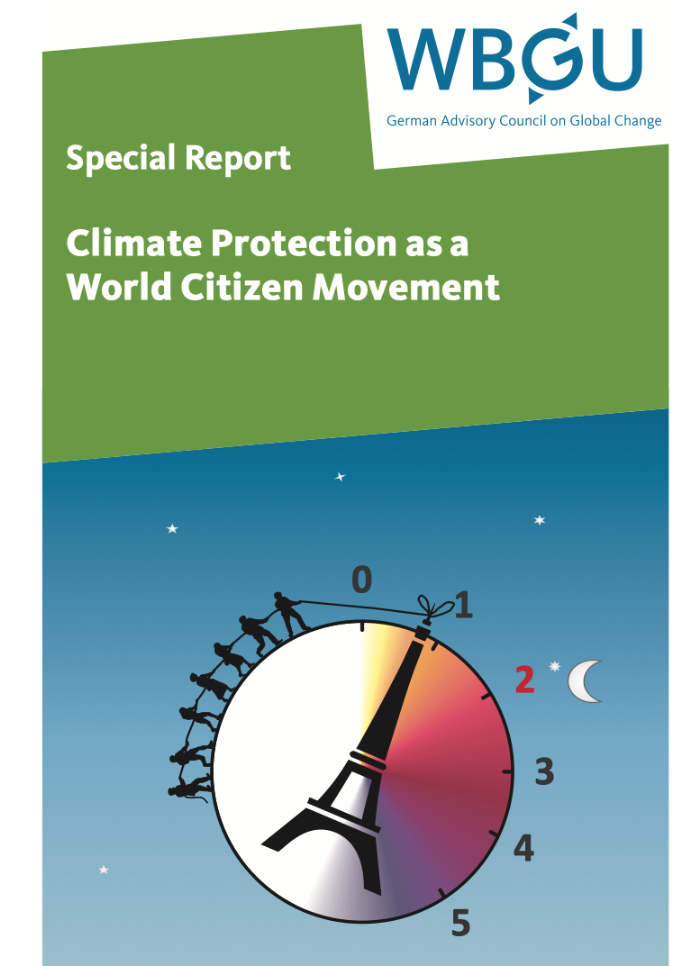
Climate Protection as a World Citizen Movement

The 5th Assessment Report of the Intergovernmental Panel on Climate Change (IPCC) makes it unmistakeably clear: unacceptable climatic consequences, which are likely to escalate beyond the 2°C guard rail, can only be avoided if further increases in greenhouse-gas concentrations are halted as soon as possible.
Overview
The WBGU therefore recommends reducing CO2 emissions from fossil fuels to zero by 2070 at the latest. This policy goal is both ambitious and incisive, because 'the zero target must be reached' by every country, every municipality, every company and every citizen if the world as a whole is to become climate-neutral.
More about this topic
However, the 2°C line can only be held if a large proportion of stakeholders – especially the OECD countries – start reducing their emissions much earlier. Global society as a whole has only a very limited carbon budget at its disposal; emissions should therefore peak by 2020 if possible, or in the third decade at the latest. In this report the WBGU outlines a two-pronged strategy for global climate protection based on interaction between multilateralism and civil society. To achieve this, on the one hand the Paris Climate Agreement targeted for late 2015 should exhibit certain characteristics set out by the WBGU. In particular, a process should be agreed to ensure compliance with the 2°C guard rail. On the other hand, all social actors should make their specific contributions towards decarbonization. In this way, an intricate responsibility architecture for the future of our planet can emerge in which vertical delegating and horizontal engagement are not contradictions, but complementary factors that reinforce each other.
More on the Subject
Climate Protection as a World Citizen Movement
PDF-Downloads
Deutsch
- Download: Klimaschutz als Weltbürgerbewegung (PDF 4,7 MB)
English
- Download: Climate Protection as a World Citizen Movement (PDF 4,7 PDF)
